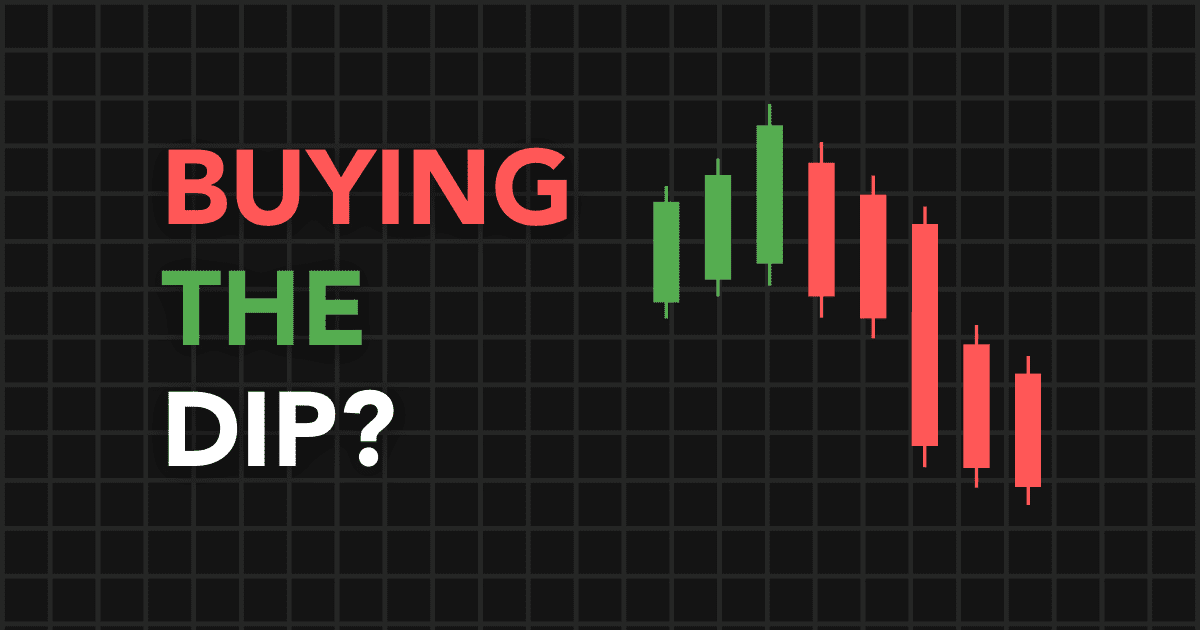Buying a dip just because it is a dip might not be the way to invest. Given the state of markets today, several folks see the declining conditions and see a bear market ripe with dips that will rebound later.
What is a dip to begin with? Is buying dips always worth it? What factors go into buying a dip? And what do people get so wrong about it?
What is ‘Buying the Dip’?
“Buying the dip” is when an asset is purchased at a lower price due to a change in market conditions that lower the price. Typically, an investor might buy a dip when the market is expected to return to greater heights shortly after it dips in price. This can be a high-risk, high-reward investment strategy depending on how you invest.
The concept of buying the dip is based on what’s called a “price wave”. A dip isn’t guaranteed to go back up a dip could be indicative of a coming crash that might only get worse, rather than rebound. But if the conditions are right, then buying dips can be quite profitable. With this knowledge in hand, what do people get wrong about buying the dip?
Mistake #1: Not Keeping Context in Mind
The first thing people get wrong about buying the dip is the importance of context. The context of market conditions for a particular asset is an important factor in successfully buying the dip. A particular asset can dip in price for several reasons. It could be a general market decline as was seen with covid, or it could be a minor hiccup related to the company’s performance. You might expect the company to recover from that hiccup and for the price to adjust favorably later.
If a coin has an investor relations page on its website it’s important to examine that first before rushing into a dip. This important contextual information isn’t visible on a graph. While historic performance is important, there are always causes for that historic performance. In addition to this, check out whale trackers and any coin-related news if possible. If there’s some important bit of information that caused the dip to happen in the first place that might indicate future performance and current conditions.
Mistake #2: Not Managing Risk Appropriately
It’s possible to invest in dips too aggressively. Before buying a dip, consider setting a minimum sell price. For example, if you buy a token at $10 expecting it to go up to $20 later and the token continues to drop in value below $10, down to $9, then consider the $9 mark the fallback line. Knowing when to quit early can save an investor from greater losses later.
Another way to assess the risk of an investment is to examine trends in price. Buying the dips of uptrends yields better results than buying the dips of downtrends. It’s possible to profit off of buying dips in downtrends, but it is part of an investment strategy called value investing and is usually accompanied by a long strategy. Arguably, Bitcoin is an example of value investing.
This is where looking at the market history and graphs can be helpful. For example, buying the dips of Apple stock for 10 years between 2009 and 2019 would yield very good results. In part, because of the uptrend, but knowing the context can also assist here. Apple was on an uptrend because of the useful products it was/is making. With this context in mind in addition to risk management, buying Apple dips for these 10 years yields profitable results.
Mistake #3: Not Having an Investment Strategy
When making investments, especially in the field of cryptocurrency, it’s important to have a “why” in mind. Why are you investing in this cryptocurrency? Cryptocurrency is a bit harder to gauge the value propositions of at times, as they range from being technical pieces of software to video games of questionable success and beyond. Buying a coin without knowing how it works and basing your purchase on an expectation that it will go up later is an easy way to get trapped.
Strategies vary by an individual for investing, but generally speaking, the more you know about something, the more likely you are to make successful investments. Before investing in a cryptocurrency, do some research on it and get a feel for what it’s supposed to offer. In general, when investing in cryptocurrency, using volatility to your advantage while buying fractions of coins, has been a helpful investment strategy for some. The volatility in price helps the fractions of an expensive whole become more affordable during dips.
Conclusion: Don’t Dive Too Deep
So when it comes to buying the dip, the three things people get wrong about it are not keeping the context of the dip in mind, not managing the risk of the dip, and not having investment strategies for buying the dip.
When the context is provided to a risk-managed investment strategy, buying the dips can be quite profitable as seen in the example of Apple between 2009 and 2019. While Apple is not a cryptocurrency, it is a great example of a successful dip-buying strategy.


